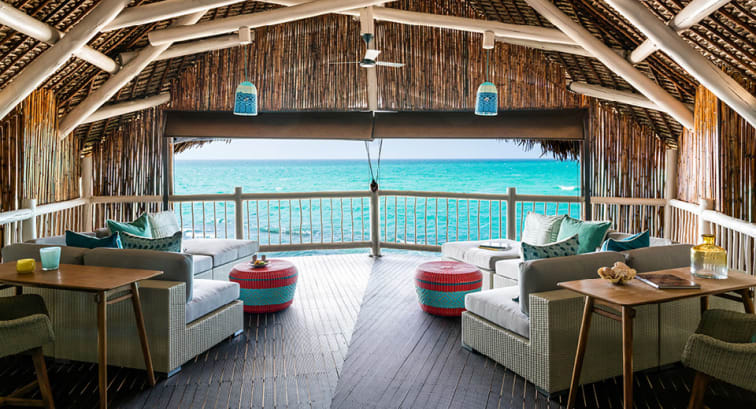Uncover the timeless tales behind Anantara hotels and destinations
When it comes to travel, few experiences rival that magical feeling you get when staying at a place that is deeply connected and reflects its destination's history and culture through architecture and design. Part of what’s important to us is sharing the unique communities our hotels and resorts are located in, as well as ensuring we honour and highlight the authenticity that the culture of each place brings. Blending luxury with a profound sense of place, we offer our guests not just a stay, but an unforgettable journey through time.
Here’s a look at some of Anantara’s hotels and resorts around the world, each with its own rich historical stories and cultural significance.

Amalfi Coast, Italy
Enchantment of the medieval Capuchin monastery
Perched high on a cliffside surrounded by lemon groves with breathtaking views of Italy’s picturesque Amalfi Coast, the Anantara Convento di Amalfi Grand Hotel offers a unique glimpse into the past. The hotel’s history dates back to 1212 and was once a monastery, home to Capuchin friars in the 1500s. The property carefully preserves much of its original architecture with the actual cloister and the Baroque church’s marble altar and Majolica floor still intact. As you wander through the 800-year-old building and its rooms and suites, with their lime-washed walls and tile flooring, you'll feel immersed in the bygone era and the enchantment of medieval Italy.
 Beyond this, the hotel was also the chosen spot for many legendary travellers on their Grand Tour of Europe, including the likes of Victor Hugo and Elizabeth Taylor, adding even more fascination to the history of it all.
Beyond this, the hotel was also the chosen spot for many legendary travellers on their Grand Tour of Europe, including the likes of Victor Hugo and Elizabeth Taylor, adding even more fascination to the history of it all.Bali, Indonesia
The legacy of Balinese spirituality and culture
On the other side of the world and on another equally beautiful cliff, this time at Uluwatu, Bali, Anantara Uluwatu Bali Resort stands as a modern sanctuary deeply intertwined with the island’s spiritual and cultural roots. Situated near the famous Uluwatu Temple, which dates back to the 11th century and is considered one of Bali's six key sea temples, the temple plays a crucial role in the island’s spiritual balance by protecting it from evil sea spirits. The temple also offers a glimpse into Balinese culture with its Kecak Dance performance every evening at sunset.


Upholding the local culture and heritage, the resort is designed with Balinese aesthetics in mind. Teak wood, traditionally used in Bali, is featured throughout the resort in the floors, furnishings, and decorative accents. Blending seamlessly into the lush landscapes, the resort’s use of natural materials reinforces the feeling of being one with nature.



Quirimbas Islands, Mozambique

At the private island of Bazaruto, guests can explore the taste of the island life and the history that shapes its waters and land while enjoying the isolated and untouched natural beauty. The resort serves as a portal to the past, reflecting the thriving historical pathway that linked Southeast Asia, India, Arabia, and East Africa.

Dubai, United Arab Emirates
Symbol of a country's transformative journey
Anantara World Islands Resort is located on one of the man-made The World archipelagos, a megaproject initiated in 2003. The project offers a fascinating contrast to older historical stories of the properties before but it is no less intriguing as it symbolises Dubai’s transformation from a small fishing village to a global icon of luxury and excess. Despite the project’s many difficulties and challenges over the years, it stands as one of Dubai’s many adventurous developments signifying the city’s relentlessly ambitious spirit throughout its history.

Offering world-class luxury, the resort’s architecture and design blend the rustic charm of island life with the city’s maritime heritage and modern opulence.

Wander through history and gain a newfound appreciation for the rich narratives behind Anantara's properties and destinations. By connecting guests to the timeless essence of their surroundings—whether exploring ancient monasteries, spiritual temples, or maritime marvels—we ensure that your stay is both historically enriching as it is relaxing.
Curated For You
You Might Also Like

Anantara Convento di Amalfi Grand Hotel
Spend luxury holidays on the Amalfi Coast, one of the most iconic destinations in the world. Anantara breathes new life into one of its most iconic landmarks, a 13th-century Capuchin convent built into the cliffside.
Anantara Uluwatu Bali Resort
Located on the southern tip of the Island of the Gods, Anantara Uluwatu Bali Resort is an all-suite-and-villa cliffside paradise boasting innovative architecture and untamed natural beauty. Take in the crashing ocean below from the resort infinity pool - or indulge in a private pool villa. Ride the waves of Impossible Beach which draws surfers from around the world. Bali is a cultural mecca of temples and artists. Let Anantara guide you on insider explorations of the island.
Anantara Rasananda Koh Phangan Villas
With only 64 pool suites and pool villas dotting lush jungle overlooking white sands, Anantara Rasananda brings castaway fantasies to life. Salute the sun on a cliffside yoga platform. Dine on fresh seafood with your toes in the sand. An idyllic island off the coast of Southern Thailand, Koh Phangan is known for crystal-clear waters, laid-back vibes and world-famous full moon parties.
Anantara Medjumbe Island Resort
Uncover the romance of a private island escape in the heart of Mozambique’s Quirimbas Archipelago. With only 12 private villas fronting the Indian Ocean, Anantara brings rustic luxury to new heights. Dive the world-class waters of the surrounding marine park. Relax into soothing beachfront spa time. Indulge in a Robinson Crusoe-inspired picnic or captain your own sunset boat cruise.




